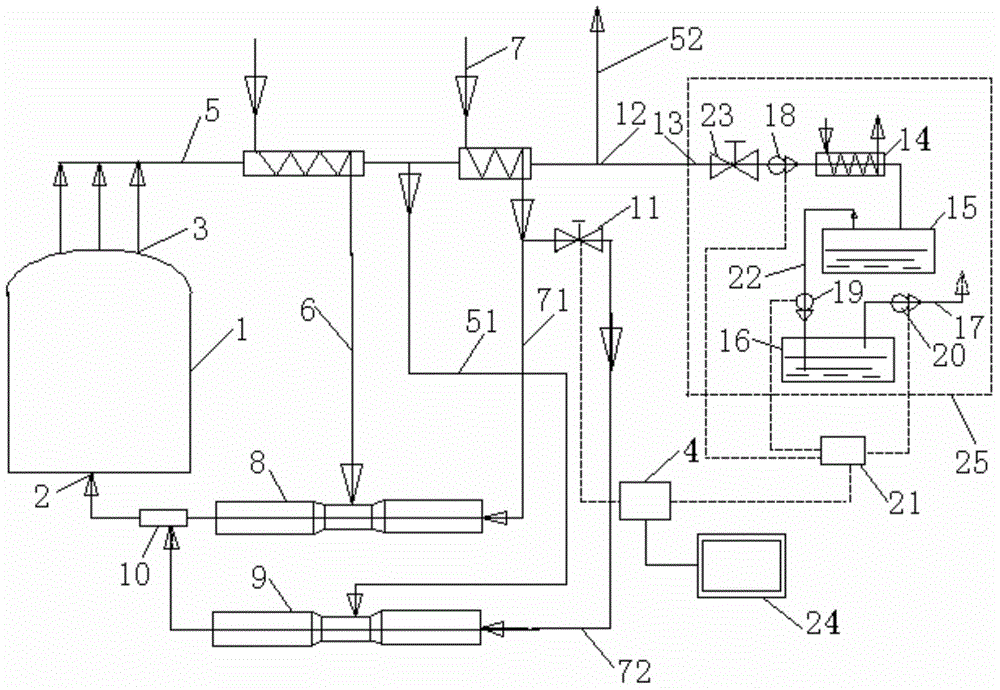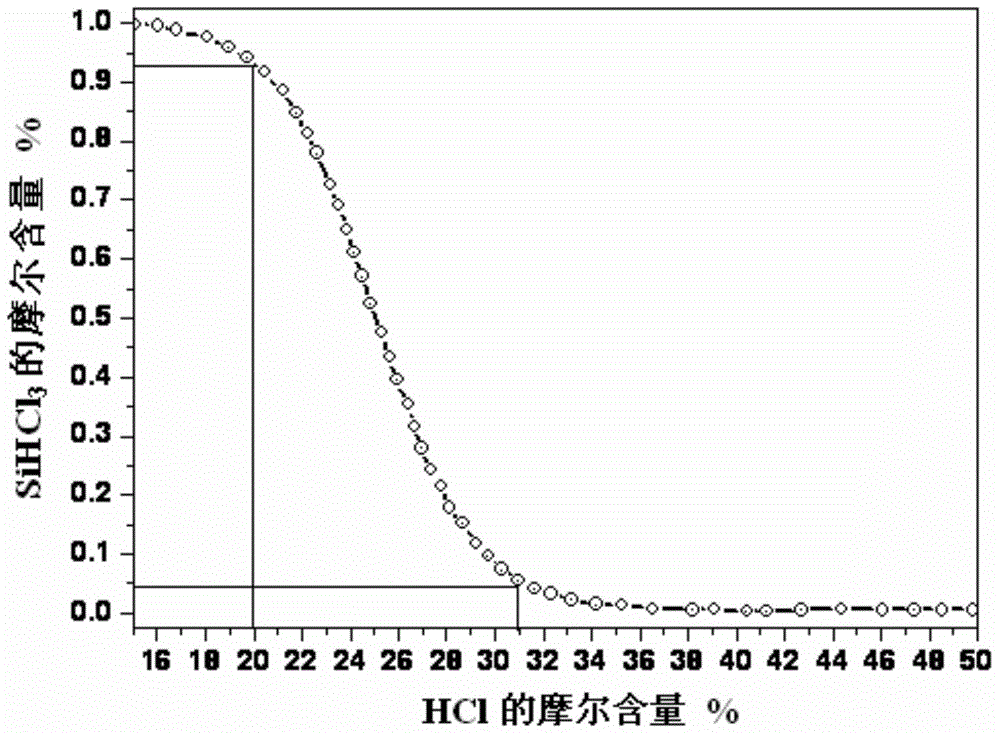Polycrystalline silicon reduction furnace raw material gas feeding amount controller
A technology for control devices and reduction furnaces, which is applied in various fluid ratio control, silicon compounds, inorganic chemistry, etc., and can solve the problems of silicon rod corrosion, increased circulation of refined trichlorosilane, and failure to eliminate silicon rod laminar layers, etc. problems, to achieve the effect of reducing production costs
- Summary
- Abstract
- Description
- Claims
- Application Information
AI Technical Summary
Problems solved by technology
Method used
Image
Examples
Embodiment 1
[0035] This embodiment provides a control device for the amount of raw material gas fed into a polysilicon reduction furnace. The polysilicon reduction furnace includes an air inlet and an exhaust port. The raw material gas introduced from the air inlet includes: Exhausted tail gas, newly introduced trichlorosilane and newly introduced hydrogen, wherein the tail gas includes trichlorosilane in the tail gas, hydrogen chloride in the tail gas and hydrogen in the tail gas, and the control device includes: The molar content detection mechanism of hydrogen chloride in the tail gas, the raw material gas feeding mechanism and the general controller, the molar content detection mechanism of hydrogen chloride in the described tail gas is electrically connected with the general controller, and the raw material gas feeding mechanism is connected with the general controller. The general controller is electrically connected.
[0036] In this embodiment, the device realizes the on-line auto...
Embodiment 2
[0039] Such as figure 1 As shown, this embodiment provides a control device for the amount of raw material gas fed into the polysilicon reduction furnace 1. The polysilicon reduction furnace 1 includes an air inlet 2 and an exhaust port 3. The raw material gas includes: the tail gas discharged from the polysilicon reduction furnace 1, the newly introduced trichlorosilane and the newly introduced hydrogen, wherein the tail gas includes trichlorosilane in the tail gas, hydrogen chloride in the tail gas and hydrogen chloride in the tail gas. hydrogen, the control device includes: the molar content detection mechanism 25 of the hydrogen chloride in the tail gas, the feed gas feeding mechanism and the general controller 4, the molar content detection mechanism 25 of the hydrogen chloride in the tail gas is connected with the general controller The device 4 is electrically connected, and the raw material gas feeding mechanism is electrically connected to the general controller 4.
...
PUM
 Login to View More
Login to View More Abstract
Description
Claims
Application Information
 Login to View More
Login to View More - R&D
- Intellectual Property
- Life Sciences
- Materials
- Tech Scout
- Unparalleled Data Quality
- Higher Quality Content
- 60% Fewer Hallucinations
Browse by: Latest US Patents, China's latest patents, Technical Efficacy Thesaurus, Application Domain, Technology Topic, Popular Technical Reports.
© 2025 PatSnap. All rights reserved.Legal|Privacy policy|Modern Slavery Act Transparency Statement|Sitemap|About US| Contact US: help@patsnap.com


